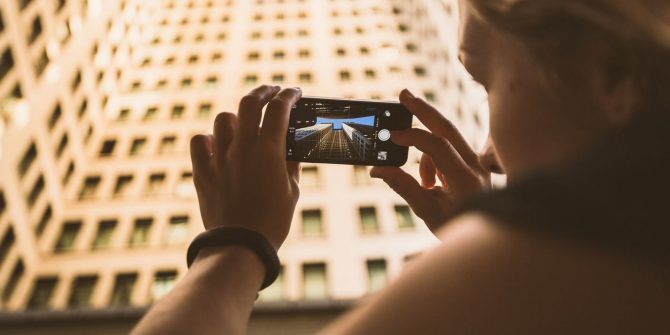Having a good camera gear is one thing, but being skilled on how to take stunning photographs is what defines you as a very good photographer. A photographer with a lower camera gear may end up taking better photos than somebody with better gear, it all depends on the skills acquired. In this article, we explore a tutorial on how to improve your landscape photos, highlighting key things you must put to heart when taking landscape photos.

1. Get your gear
Even if you can capture amazing landscape pictures with only your phone, there are added bits of kit that will take things to the next level. Get clip-on phone lenses, a filter adapters for your phone, a portable phone charger, a dope outdoor wear e.t.c, and the results will even improve.
2. Sort your phone camera settings
Okay, your device can capture beautiful pictures in its default auto mode, however, you can make things even better. If your device comes with a “pro” mode that gives you manual control of settings, jump on that. If that is not the case, applications such as Moment, Lightroom or MuseCam will allow you to control settings like ISO, shutter speed and white balance. These apps also allow you to shoot in raw format.
Must Read: Best Android Photography Apps
Raw pictures will not save a lot of the automatic camera settings that your device applies to a jpeg picture, like white balance or sharpening. And in landscapes, changing the white balance is key.
3. Shoot Early, Stay Out Late
Still on how to improve your landscape photos. The time to take those shots is key in landscape photography since the lighting changes totally once the sun comes out. The most appropriate time of the day for very dramatic light is at sunrise or at sunset.
Must Read: 5 Best Online Resources for Learning Photography
By this time, the sun is nowhere to be found which gives you directional light and long shadows cast over the scene. Midday is never a great time to snap anything.
4. Watch the Weather
Weather is vital in all kinds of outdoor photography, but also with landscapes. Various weather conditions can easily transform your scene, totally changing its mood, lighting, and colors. However, this is not to say that bad weather automatically results in bad pictures.
Must Read: 10 Best Drones for Photography Beginners
A plain, miserable grey sky with no texture to the clouds or interesting light on the land plus zero contrast to the scene in front of you, is bad for landscapes.
5. Experiment with Your wide And Zoom Lenses
If your smartphone comes with wide-angle mode, then you are in luck. Like I said earlier if you do not have a wide mode on your device as standard, making use of more lenses for the same result.
Super-wide landscapes can be quite dramatic since they capture a lot of a scene in one photo. Mountain tops that should not be in frame are captured heavily, and amazing rivers will now be visible fully, making their way into a scene.
More Information About Landscape Photos
Landscape photography shows spaces within the world, sometimes vast and unending, but other times microscopic. Landscape photographs typically capture the presence of nature but can also focus on man-made features or disturbances of landscapes. Landscape photography is done for a variety of reasons.
Perhaps the most common is to recall a personal observation or experience while in the outdoors, especially when traveling. Others pursue it particularly as an outdoor lifestyle, to be involved with nature and the elements, some as an escape from the artificial world.
Many landscape photographs show little or no human activity and are created in the pursuit of a pure, unsullied depiction of nature, devoid of human influence—instead of featuring subjects such as strongly defined landforms, weather, and ambient light. As with most forms of art, the definition of a landscape photograph is broad and may include rural or urban settings, industrial areas or nature photography.
Notable landscape photographers include Ansel Adams, Mark Gray, Galen Rowell, and Edward Weston. William Henry Jackson was one of the first to take the camera to the American West and later overseas.
Because landscape photography is normally outdoors photography, protection from the elements can be helpful. Shooting from inside a sheltering structure or stationary vehicle (engine off, occupants stationary) can be helpful.
The use of an umbrella or other shields to keep the camera and photographer dry can also be helpful. A waterproof container for the camera, with drying agent inside (e.g.: dry cloth) may be advised, and experts advise that the camera should be shielded from blowing dust, snow, and rain, and extremely harsh direct sunlight.
There you have it – a comprehensive tutorial on how to improve your landscape photos. If you have any questions as regards this tutorial, feel free to drop them in the comment section below.



